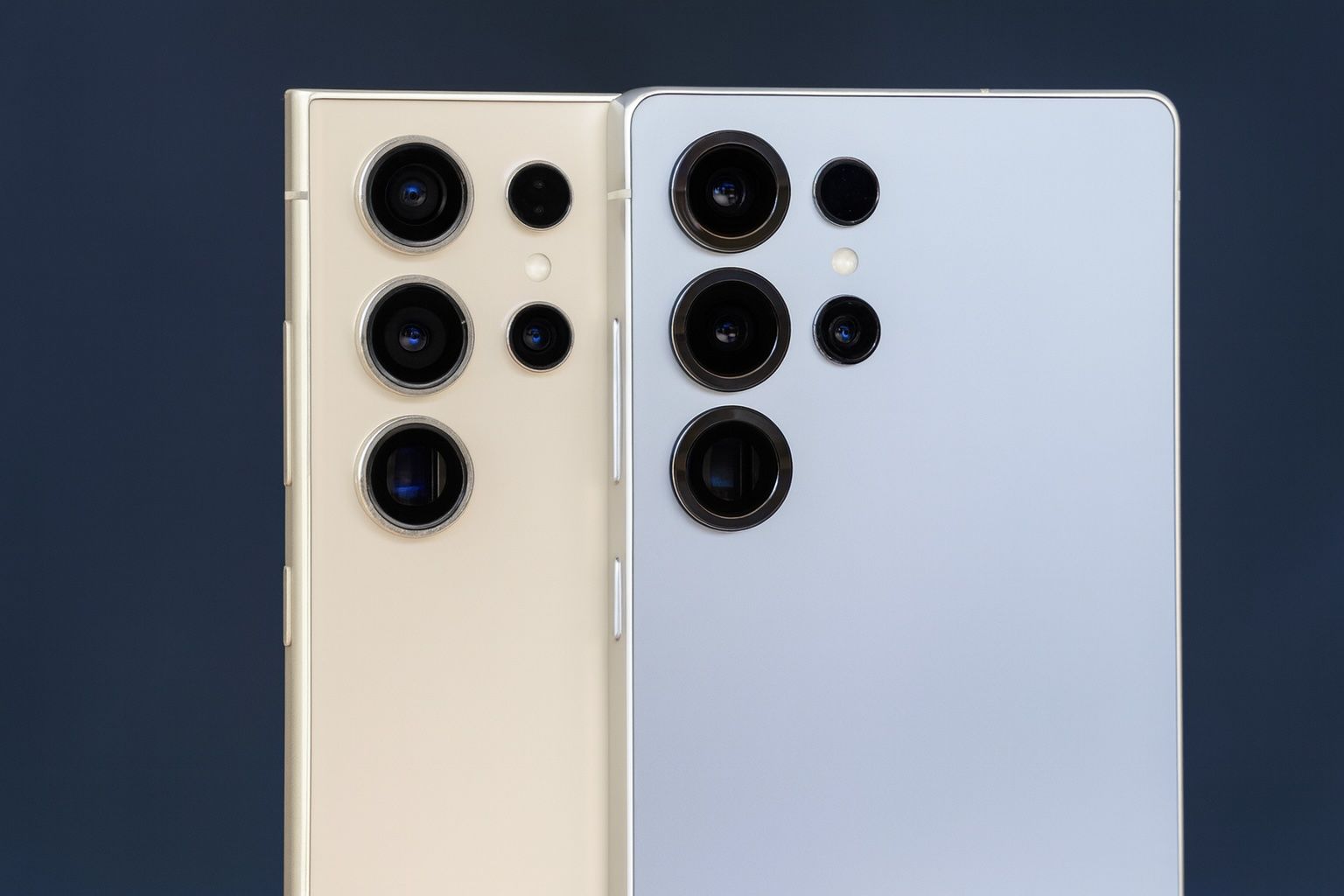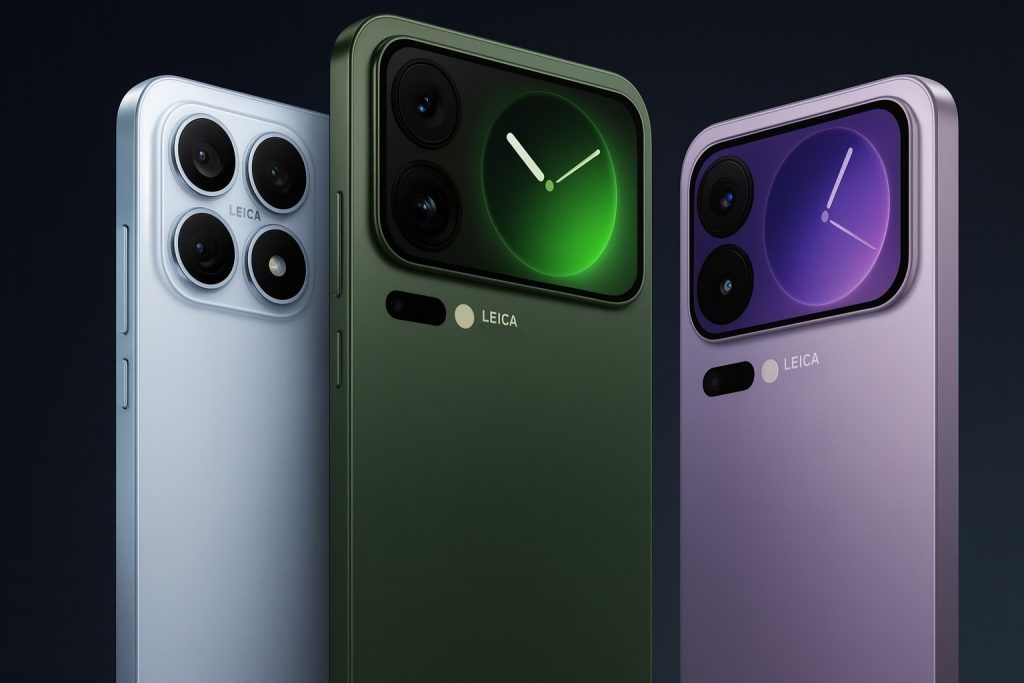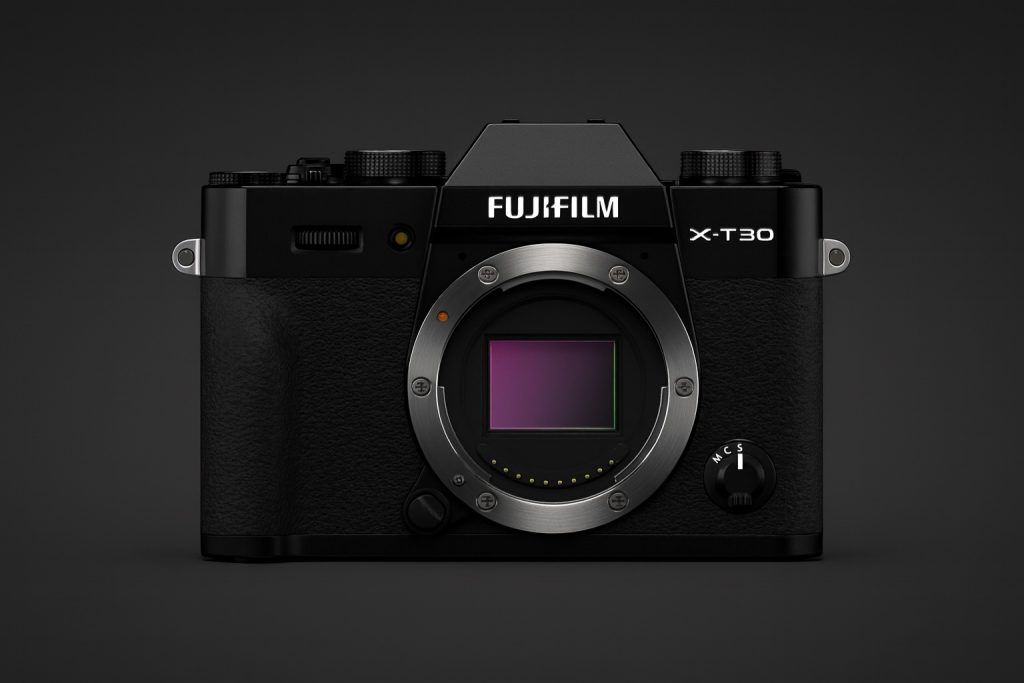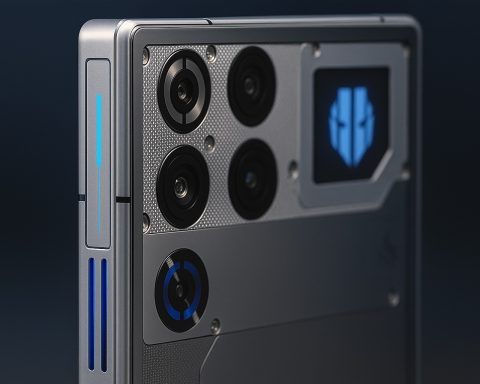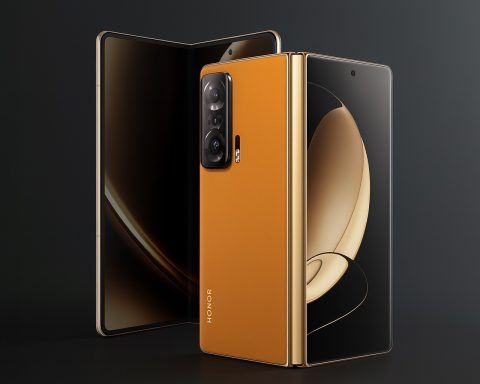- Major Privacy Upgrades: Samsung’s Galaxy S26 Ultra is tipped to debut a built-in “Privacy Display” that limits screen visibility at certain angles so that nearby snoopers can’t read it, along with a “Privacy Protection” tool to automatically blur sensitive info in shared images [1] [2]. These privacy features would be firsts for Samsung’s lineup, giving users more control over onlookers and shared data.
- Revamped Lineup & Launch: Rumors say Samsung will shake up its naming in early 2026 – the base Galaxy S26 might be rebranded as S26 Pro, the Plus model replaced by a super-slim S26 Edge, and only the S26 Ultra keeps its name [3]. The series is expected to launch in January 2026 at Samsung’s usual Galaxy Unpacked event [4]. Regionally, Samsung may return to using its in-house Exynos 2600 chip for some models, while the Ultra gets the next-gen Snapdragon 8 Gen 5, with the US and Korea likely sticking to Snapdragon only [5] [6].
- Design: Thinner Phone, Thicker Camera: Leaked renders show the S26 Ultra adopting rounder corners (moving away from Samsung’s old boxy look) and an extra-large camera bump [7] [8]. The chassis is reportedly slimmed to about 7.8 mm (from 8.2 mm on the S25 Ultra), but the rear camera module juts out around 4.5 mm, over 2 mm more than last year’s, to house the upgraded lenses [9] [10]. Despite the bigger hump, the phone’s weight should stay about the same (~217 g) [11].
- Camera Tech – Iterative Upgrades: Samsung is said to be using a new 200 MP main sensor (a slightly larger 1/1.1-inch Sony sensor, up from 1/1.3″ in the S25 Ultra) for improved image quality [12]. However, other camera changes appear modest: the Ultra may stick with a 50 MP 1/2.52″ telephoto sensor, which one leakster notes would be the smallest zoom sensor on any 2026 flagship [13]. The S26 Ultra is expected to retain a four-lens setup (200 MP main, 50 MP periscope telephoto with a wider aperture, 50 MP ultra-wide, and a 12 MP short telephoto) [14] – meaning better low-light zoom and slight improvements, but no radical overhaul. There’s even chatter that variable aperture could return on the Ultra’s camera, reviving a feature Samsung last used years ago [15].
- Hardware, Battery & Charging: All S26 models are getting slimmer and lighter, thanks in part to advanced battery tech, but battery capacities aren’t leaping forward. The Galaxy S26 Ultra is expected to stick with a 5,000 mAh battery, just like its predecessor [16]. Notably, Samsung might finally bump its charging speed to 60 W wired on the Ultra (up from the familiar 45 W limit) [17], and introduce Qi2 magnetic wireless charging on at least the Edge and Ultra models for MagSafe-style snap-on accessories [18]. Samsung’s S Pen stylus isn’t going anywhere – in fact, leaks show the S26 Ultra’s S Pen will get a subtle redesign, with a rounder shape to match the phone’s curvier aesthetic [19].
A New Galaxy S26 Lineup and Early 2026 Launch
Samsung’s next flagship family is on the horizon, and if history is any guide, the Galaxy S26 series should debut in January 2026 [20]. This time, though, Samsung might revamp its lineup naming and models. Multiple leaks point to the end of the “Plus” model and the introduction of new monikers. The standard Galaxy S26 could be renamed the Galaxy S26 Pro, while a super-slim Galaxy S26 Edge may replace the Plus variant [21]. The Galaxy S26 Ultra would retain its title as the top-end model. Not all insiders agree on the exact plan – some reports hint Samsung might even offer four models instead of three – but the consensus is that the S-series roster will look different on paper than in previous years [22].
Under the hood, Samsung appears set to split the processors by region again, reversing last year’s all-Qualcomm approach. According to leaks, the Galaxy S26 Ultra will run on Qualcomm’s next flagship chipset (often dubbed Snapdragon 8 Gen 5 or “8 Elite”), while the S26 Pro (standard) and S26 Edge might pack Samsung’s own Exynos 2600 chip in many markets [23]. The Exynos 2600 is a 2 nm chip reportedly ahead of schedule in development [24]. Don’t expect Exynos everywhere, though – buyers in the U.S. and South Korea will likely get Snapdragon silicon in all models, as Samsung traditionally reserves its in-house chips for Europe and other regions [25].
On the memory and storage front, early rumors suggest the S26 Pro and Edge will offer up to 12 GB RAM and 512 GB storage, while the Ultra could go up to 16 GB RAM and 1 TB in top configurations [26] [27]. In terms of software, the phones should launch with Android 15 running Samsung’s new One UI 8.5 interface – which, as we’ll see, brings some cutting-edge features of its own.
Slimmer Design with Rounder Corners – and a Giant Camera Bump
Visually, the Galaxy S26 Ultra is shaping up to be a mix of familiar and fresh. On one hand, leaked CAD renders and dummy units show that Samsung is continuing the softer, rounded corner design introduced last generation, moving further away from the sharply rectangular Galaxy Note-style look [28]. In fact, some observers quip that Samsung is “making its phones look more like the iPhone” by giving up the old boxy aesthetic [29]. The S26 Ultra’s frame has curvier edges than before, which should make it more comfortable in the hand compared to older models with harsher corners.
At the same time, Samsung is aggressively slimming down the device’s thickness. The Ultra will reportedly measure about 7.8 mm thick (down from ~8.2 mm on the S25 Ultra) [30]. This diet regimen applies across the lineup: the mid-tier S26 Edge could be an astonishing ~5.5 mm thin, and the S26 Pro around 6.7 mm, per one leak [31]. These numbers put the new Galaxy models among the slimmest smartphones, approaching “featherweight territory” as one report put it [32].
However, that ultra-slim profile comes with a new design twist on the back: an extra-chunky camera bump. Unlike recent Galaxy S Ultras that had nearly flush lenses, the S26 Ultra brings back a pronounced camera housing. According to measurements shared by reliable tipster Ice Universe, the phone’s camera module will protrude about 4.5 mm from the chassis – significantly thicker than the ~2.4 mm lens bump on the S25 Ultra [33]. The main body might be thinner, but the camera island is bulkier, meaning the phone on a table will rock even more unless you use a case. The overall device depth at the camera could be roughly 12.4 mm.
Why the big bump? It seems Samsung needed more room for its camera hardware (more on that shortly). Renders show a vertical triple-camera layout on the S26 Ultra, now enclosed in a compact rectangular island rather than individual protruding rings [34]. The design is a bit reminiscent of 2021-era phones – so much so that one tech blogger remarked the S26 Ultra looks “positively ancient” next to its predecessor due to the throwback camera module style [35]. Of course, beauty is in the eye of the beholder; some will appreciate the new look, but others, like that commentator, find the large module “simply unappealing” [36]. Samsung appears to be prioritizing function (thinner body, potentially better camera cooling or optics) over form here.
The rest of the S26 Ultra’s build is expected to stay premium: an aluminum alloy frame, IP68 water resistance, and a 6.9-inch glass screen using Samsung’s latest M14 OLED panel tech. That OLED panel is rumored to be brighter and more efficient than ever [37] – possibly a key selling point to balance out the lack of a big battery upgrade. We could also see the use of Gorilla Glass Victus 3 (or newer) and Samsung’s third-gen anti-reflective coating for improved outdoor visibility [38]. As for weight, despite the camera bulge, the S26 Ultra shouldn’t get heavier. Leaks peg it at 217 g, virtually the same as the S25 Ultra’s 218 g [39], thanks to weight savings elsewhere.
Incremental Camera Upgrades (and That Massive 200 MP Shooter)
Samsung’s Galaxy S Ultra phones are known for pushing camera boundaries – the S20 Ultra debuted 100× Space Zoom, the S22 Ultra brought a 108 MP sensor, and the S25 Ultra jumped to 200 MP. With the S26 Ultra, Samsung appears to be refining rather than revolutionizing its camera system. The headline change is a new 200 MP main camera sensor. Rather than using Samsung’s own HP-series sensor as in the S25U, rumor has it the S26 Ultra will sport a Sony-made 200 MP sensor about 1/1.1-inch in size [40]. That’s a subtle increase in sensor area (the S25 Ultra’s 200 MP sensor was 1/1.3″), which should improve light gathering and dynamic range. In smartphone camera terms, even a small bump in sensor size can yield better low-light performance and detail. In short, expect slightly sharper and cleaner shots from the primary camera, but not a dramatic leap in resolution since it stays at 200 MP.
The rest of the rear camera array looks like a mix of old and new. The S26 Ultra will still carry a quad-camera setup: in addition to the main lens, there’s an ultrawide camera and two telephoto cameras (one for long-range zoom, one for shorter range portraits). The leaked specs suggest the ultrawide may get a 50 MP sensor (possibly to match or exceed rivals in resolution), and the short telephoto could be upgraded to 12 MP [41]. The periscope zoom lens – which handles extreme zoom levels (5× or 10× optical) – is rumored to stick with 50 MP resolution. It might, however, feature a wider aperture than last year’s model to capture more light at high zoom [42].
Interestingly, insiders claim Samsung is not increasing the telephoto sensor size despite the bigger camera bump. Ice Universe reports that Samsung will “stick with a 1/2.52-inch telephoto sensor at 50MP” for the S26 Ultra [43]. For context, that sensor is relatively small; the leaker even noted it would be the smallest telephoto sensor on any global flagship phone in 2026 [44]. In other words, while Apple and Google might use larger sensors for their zoom cameras, Samsung appears content to reuse a smaller sensor – possibly the same one from the S25 Ultra’s 3× lens – in the new Ultra. The benefit is Samsung can keep using its existing periscope zoom design and algorithms, but the downside is image quality at zoom might not improve much. Samsung might be banking on software enhancements and that wider aperture to compensate.
One exciting possibility is the return of variable aperture on the main camera. A well-known leaker has hinted that Samsung could bring back the ability for the lens to physically switch apertures (as seen on the Galaxy S9 series) to optimize for light or depth of field [45]. If true, the S26 Ultra’s primary camera could automatically adjust between a wide aperture (for bright low-light shots with natural bokeh) and a narrower aperture (for sharper daylight shots or larger depth of field). Variable aperture was last seen on Samsung phones in 2018–2019, and its comeback would be a nod to serious photography enthusiasts.
Overall, the S26 Ultra’s camera upgrades seem focused on refinement over revolution. We’re not expecting a sudden jump in zoom range or megapixels (the Space Zoom is likely to remain maxed around 100× digital as before). Instead, look for better low-light zoom results, slightly improved ultrawide shots, and possibly new software tricks. Samsung’s photography AI will no doubt get tweaks in One UI 8.5, and with Google and Apple stepping up their game, Samsung will want to maintain its spot as an “all-round camera champ.” Still, some observers note that on paper the S26 Ultra’s cameras sound only modestly better than the S25’s. Indeed, one industry analyst wryly observed that Samsung’s main camera upgrade might just be “a new model [sensor] but the size remains unchanged,” and aside from that “there’s really nothing new” in the S26 Pro/Ultra cameras [46] [47]. We’ll have to wait for the official reveal to see all the camera details – and more importantly, real-world tests – to judge the upgrade.
Built-In Privacy: “Private Display” and Auto-Redacting Images
One area where the Galaxy S26 Ultra will break new ground is privacy. Samsung appears to be responding to growing privacy concerns by building privacy features directly into the phone’s hardware and software. Two notable tools have leaked from Samsung’s upcoming One UI 8.5 software: Privacy Display and Privacy Protection.
The Privacy Display feature is all about shielding your screen from prying eyes in public. Leaked screenshots and code from One UI 8.5 show a setting for a so-called private or privacy display that “limits screen visibility from side angles to protect your privacy in public.” [48] In effect, this acts like an electronic privacy screen – the kind of thing you might achieve with a polarized screen protector – but integrated into the phone’s display itself. When activated, the screen’s image becomes much harder to read unless you’re looking at it straight-on. This could be a huge boon for anyone who’s ever noticed a stranger glancing over at their phone on the train or in a café.
How is Samsung doing this? It turns out the Galaxy S26 Ultra is rumored to use an advanced display technology that Samsung Display has been working on, called “Flex Magic Pixel” [49]. According to Samsung Display (the company’s screen-making arm), this tech uses AI-driven pixel adjustments to control viewing angles [50]. Essentially, the screen can intelligently diffuse or redirect light at certain angles. So when Privacy Display mode is on, someone sitting next to you would just see a darkened or distorted screen, while you looking head-on still see it clearly. It’s akin to those lenticular privacy filters, but done by the OLED panel itself dynamically. This would be a hardware-dependent feature, likely exclusive to the S26 Ultra (and perhaps future models), since current phones don’t have the necessary pixel-level control [51] [52].
Leaked interface text suggests Privacy Display can be toggled manually or set to auto-trigger. You might allow it to turn on automatically in certain scenarios – for example, whenever the phone detects it’s in a “crowded place” or when specific “sensitive apps” are open [53] [54]. In fact, the settings list examples like elevators, public transport, and checkout lines as places where Privacy Display could engage on its own [55]. Samsung could use location data, motion sensors, or Bluetooth/Wi-Fi cues to guess when you’re in a crowd, though the exact detection method isn’t confirmed (and does raise some questions about accuracy and permission [56]). Users will also have granular control – One UI code indicates you can set custom conditions, like only enabling the privacy filter for certain apps (banking, messaging, email, etc.) or during specific times [57] [58]. There are even multiple intensity levels: a “Maximum Privacy” mode can make the screen extra dim for the highest protection [59]. Samsung is clearly aiming to let users dial in their preferred balance between privacy and usability.
The second feature, Privacy Protection, deals with what happens when you share content from your phone. According to SamMobile and others who spotted it in One UI 8.5, Privacy Protection can automatically blur or redact sensitive information in images before you send them off [60] [61]. For instance, if you’re about to share a photo of a document (say your ID or a credit card or even a screenshot of an email), the phone can detect text like names, ID numbers, addresses, credit card digits, faces, etc., and then give you the option to blank out those details in the image [62]. The interface will even let you compare the original and censored version side by side before you share [63]. You remain in control of what is hidden or shown – you can choose which elements to blur and even the style of redaction (for example, pixelation or black bars) [64] [65].
Notably, this image Privacy Protection isn’t entirely new; Samsung has had a similar feature in limited markets. In fact, previous One UI versions in China included this auto-redact tool, but it never rolled out globally [66]. With One UI 8.5 and the S26 launch, Samsung appears ready to bring it worldwide [67], presumably with enhancements like on-device AI for faster processing [68]. It’s a timely addition – in an age of oversharing, having your phone intelligently hide your private info (when you want it to) could prevent accidental data leaks. For example, if you need to send a work chat a screenshot of your boarding pass or a bill, Privacy Protection can instantly scrub out things like your frequent flyer number or account details.
Together, Privacy Display and Privacy Protection position the Galaxy S26 Ultra as a privacy-focused flagship. Samsung could very well market these as signature features that set it apart from Apple and others. Industry experts note that while third-party privacy screen protectors and apps exist, having these capabilities baked in at the system level is a big advantage [69]. It’s more convenient, likely more secure (especially if done with on-device AI rather than cloud), and it feels like a premium, polished solution. These features might seem niche, but they address real everyday concerns – from shoulder-surfers on the subway to accidentally sharing too much in a photo. As TechRadar quipped, such tools could give the S26 Ultra “an edge over its competitors” in offering peace of mind out-of-the-box [70].
Performance, Battery Life, and Other Notable Features
Raw performance on the Galaxy S26 series should be top-tier, though perhaps not a massive jump from the current generation. The S26 Ultra’s expected Snapdragon 8 Gen 5 chip (or “8 Elite Gen 1”) will likely bring the usual yearly boosts in CPU/GPU speed and efficiency. More intriguingly, Samsung’s reintroduction of Exynos chips in some models will be a storyline to watch. The Exynos 2600 destined for the S26 Pro/Edge is built on a cutting-edge 2 nm process [71] and could feature Samsung’s latest in-house CPU designs or AMD Radeon mobile graphics. If Samsung has optimized it well, the gap between Exynos and Snapdragon variants might be much smaller than in the past. Still, Qualcomm’s chip (possibly featuring custom Nuvia-designed cores) is expected to be a beast, especially in graphics and AI tasks. In regions where both versions are sold, savvy buyers will be keen to see benchmark comparisons.
Memory configurations, as mentioned, will range up to 16 GB LPDDR5X RAM on the Ultra, which is more than sufficient for heavy multitasking and future-proofing. Storage should be UFS 4.1 or newer, with 256 GB as a likely base for the Ultra, and options for 512 GB and 1 TB (the latter probably reserved for a top-tier edition, possibly bundled with exclusive colors or a case). Samsung is unlikely to bring back the microSD card slot, given it’s been years since it was removed on flagships, so internal storage is all you get – choose wisely.
Battery life on the S26 Ultra is one area getting mixed expectations. Despite the phone becoming slimmer, Samsung is apparently not increasing the battery capacity – the Ultra should retain a 5,000 mAh battery like its predecessors [72]. Some fans might be disappointed to hear that, especially as Apple’s latest iPhones have been bulking up battery sizes for longer endurance. Samsung seems to be taking the opposite approach of keeping devices svelte, even if it means not adding milliamp-hours. The hope is that the efficiency improvements of the new chips and the M14 OLED display will yield better battery life even with 5,000 mAh. Indeed, that new display panel is rumored to be more power-efficient, which could offset the always-on privacy features and high refresh rates [73].
On the bright side, Samsung may finally address its charging speed conservative stance. The Galaxy S26 Ultra is rumored to support 60 W fast wired charging [74] – a notable step up from the 45 W cap that Galaxy flagships have had for a few generations. While 60 W still lags Chinese competitors (some of which push 100 W+), it would shorten the Ultra’s charging time and narrow the gap. For reference, at 45 W the S25 Ultra takes roughly 55–60 minutes for a full charge; at 60 W, we might see full charges in under 45 minutes in ideal conditions. It’s a welcome improvement, albeit one Samsung adopted very cautiously. As always, sustained charging speeds will depend on thermals – Samsung likely will use a multi-stage charging curve to preserve battery health.
Wireless charging is also in for an upgrade with the adoption of Qi2 standard. Qi2 brings Magnetic Power Profile support, meaning the S26 series can have built-in magnets to snap align with wireless chargers and accessories (similar to Apple’s MagSafe). Leaks suggest the S26 Edge and Ultra will feature Qi2 with magnets [75]. This opens the door to a whole ecosystem of magnetic mounts, battery packs, wallets, and more for Galaxy phones. It’s a smart move by Samsung, as Qi2 will likely become the universal standard and we’ll see cross-compatible accessories. One caveat: earlier chatter claimed that fitting magnets in the Ultra could conflict with the internal space for the S Pen stylus [76]. However, newer reports say Samsung found a way to keep the S Pen while still enabling magnetic wireless charging [77]. The S Pen silo might have been slightly redesigned or shifted to accommodate this.
Speaking of the S Pen, Galaxy S Ultra’s signature stylus is confirmed to be returning, and it’s even getting a makeover. Renders and case leaks show the S26 Ultra’s S Pen will have a rounder design [78] – likely meaning the stylus’s shaft and top are more cylindrical and smooth, rather than the flatter-edged stylus of recent years. This goes hand-in-hand with the phone’s move to a curvier design language. Functionally, the S Pen should work the same (Bluetooth LE for air gestures, magnetic charging inside the phone, etc.), but it might be a tad more ergonomic to hold. Some speculation floated that Samsung would drop the S Pen entirely to save space (especially if the “Edge” model was to focus on thinness), but that’s not the case; the Ultra keeps the pen, maintaining Samsung’s edge for note-takers and sketchers.
Other notable features likely include the usual Samsung staples: stereo speakers tuned by AKG, an ultrasonic in-display fingerprint reader (possibly a newer Qualcomm 3D Sonic sensor for faster unlocks), Ultra-Wideband (UWB) support for digital car keys and trackers, and the latest connectivity (Wi-Fi 7, Bluetooth 5.4, and of course 5G with broader band support). Samsung may also introduce One UI 8.5 software improvements like expanded AI features (the company has hinted at on-device AI “Genie” features similar to Google’s Assistant and Apple’s Siri upgrades). For instance, One UI 8.5 reportedly adds features inspired by iOS 17/18, such as new lock screen customization and improved widgets [79]. Samsung is also expected to launch its Galaxy Ring around the same time as the S26, which could integrate with the phones for health tracking – though that’s a separate product, it shows Samsung’s broader ecosystem push.
Early Reactions: Hype, Concerns, and Competition
Even months before its official announcement, the Galaxy S26 Ultra is drawing a mix of excitement and skepticism from tech observers. On one hand, Samsung’s emphasis on privacy and refinement is being seen as a smart move to differentiate its flagship. The integrated Privacy Display feature, in particular, has generated buzz as a potential “killer feature” that competitors lack. “Having this level of protection integrated into the phone feels more polished and premium,” one reporter noted, arguing it could give Samsung a marketing edge [80]. For professionals handling sensitive information or anyone who values privacy in public, the S26 Ultra might become the go-to choice.
On the other hand, some long-time Samsung watchers are underwhelmed by reports of minimal hardware upgrades. Respected leaker Ice Universe – known both for scoops and scathing critiques – has bluntly said “the biggest upgrade of the Galaxy S26 Pro is simply adding the word ‘Pro’ to its name.” In his view, most specs “may not be improved” at all, with an allegedly “useless 50MP” new ultra-wide camera and essentially the same main sensor size and telephoto as before [81] [82]. That pessimistic take suggests Samsung could face backlash if the S26 series doesn’t deliver obvious jumps in areas like battery life, camera quality, or display resolution. Ice Universe is often critical (even the TechRadar writer noted he “tends to take quite a negative view” of Samsung devices [83]), but his comments resonate with enthusiasts who expected more radical changes.
Industrial design is another flashpoint. The S26 Ultra’s aesthetic changes – rounder corners and a large camera island – have drawn mixed reactions. Some users welcome the softer feel and the fresh look, while others lament the loss of the classic Galaxy “identity”. A PhoneArena columnist didn’t mince words, saying the S26 Ultra looks “a bit outdated next to its predecessor” and that for the first time he felt no temptation to upgrade [84]. He compared the new camera module to a throwback from years past and argued that Samsung slimming the device at the cost of battery capacity is the wrong direction, especially as Apple is “bulking up” its iPhone batteries [85]. Indeed, Apple’s iPhone 17 Pro/Pro Max (launched in late 2025) took a different tack: slightly thicker and heavier than the previous generation, but with significantly improved battery endurance and some camera boosts. If Samsung’s S26 Ultra launches with similar battery life as last year and only incremental camera tweaks, reviewers may contrast it unfavorably with the iPhone and even Google’s Pixel 10 series, which has been rumored to focus on computational photography leaps.
That said, Samsung could still surprise us. The company often keeps certain innovations under wraps until launch. There are rumblings about new AI-driven software tricks in the camera (perhaps an Astro photo mode or improved video stabilization), as well as possibly a new cooling system to sustain performance for gamers. And we shouldn’t overlook Samsung’s strength in displays – if that M14 OLED is as good as advertised, the S26 Ultra might sport one of the brightest, most color-accurate screens on the market, with even better outdoor readability.
In the broader competitive landscape, the Galaxy S26 Ultra will square off against not just Apple’s iPhone 17 Pro Max, but also Chinese flagship phones in early 2026 (like the Xiaomi 15 Ultra, OnePlus 13/15 series globally, etc.). Samsung historically emphasizes all-round prowess and a refined user experience over any one spec. With the S26 Ultra, it seems to be leaning into that philosophy: polishing the design, adding thoughtful features like privacy enhancements and Qi2 charging, and making moderate improvements where possible. It may not have one singular “wow” spec upgrade on the spec sheet (there’s no 1-inch camera sensor or 10x optical zoom jump this year, it appears), but it aims to be the most complete Android flagship.
Bottom Line: The Samsung Galaxy S26 Ultra is shaping up as an evolutionary upgrade packed with subtle improvements and a few standout innovations. Its success will likely depend on how well those changes translate into real-world benefits. If the Privacy Display works seamlessly and the phone feels like a meaningful step up in day-to-day use (with faster charging, great ergonomics, and reliable cameras), Samsung could have a quiet winner on its hands. But if the differences are hard to notice outside of the marketing bullet points, even loyal Galaxy users might pause before spending on a new Ultra. As always, the final verdict will come when Samsung officially unveils the S26 series – likely in January – and we get to see if Samsung can meet the high expectations it has set for its flagships year after year. For now, based on the leaks and rumors, the Galaxy S26 Ultra looks to be a sophisticated refinement of Samsung’s formula, with a keen eye on privacy and user experience, even as the raw specs play it safe [86] [87]. In just a few months, we’ll find out how well this approach resonates with the tech world and consumers alike.
Sources: Samsung leaks and analyses from PhoneArena, Android Central, Android Authority, TechRadar, SamMobile and others [88] [89] [90] [91] [92] [93] [94] [95].
References
1. www.techradar.com, 2. www.sammobile.com, 3. www.phonearena.com, 4. www.phonearena.com, 5. www.phonearena.com, 6. www.phonearena.com, 7. www.phonearena.com, 8. www.androidauthority.com, 9. www.androidcentral.com, 10. www.androidauthority.com, 11. www.androidauthority.com, 12. www.phonearena.com, 13. www.androidauthority.com, 14. www.androidcentral.com, 15. www.phonearena.com, 16. www.phonearena.com, 17. www.phonearena.com, 18. www.phonearena.com, 19. www.phonearena.com, 20. www.phonearena.com, 21. www.phonearena.com, 22. www.phonearena.com, 23. www.phonearena.com, 24. www.phonearena.com, 25. www.phonearena.com, 26. www.androidcentral.com, 27. www.androidcentral.com, 28. www.phonearena.com, 29. www.phonearena.com, 30. www.androidcentral.com, 31. www.androidcentral.com, 32. www.androidcentral.com, 33. www.androidauthority.com, 34. www.androidcentral.com, 35. www.phonearena.com, 36. www.phonearena.com, 37. www.phonearena.com, 38. www.androidcentral.com, 39. www.androidauthority.com, 40. www.phonearena.com, 41. www.androidcentral.com, 42. www.androidcentral.com, 43. www.androidauthority.com, 44. www.androidauthority.com, 45. www.phonearena.com, 46. www.techradar.com, 47. www.techradar.com, 48. www.androidauthority.com, 49. www.androidauthority.com, 50. www.androidauthority.com, 51. www.techradar.com, 52. www.techradar.com, 53. www.phonearena.com, 54. www.androidauthority.com, 55. www.phonearena.com, 56. www.phonearena.com, 57. www.androidauthority.com, 58. www.androidauthority.com, 59. www.androidauthority.com, 60. www.techradar.com, 61. www.sammobile.com, 62. www.techradar.com, 63. www.sammobile.com, 64. www.sammobile.com, 65. www.sammobile.com, 66. www.sammobile.com, 67. www.sammobile.com, 68. www.sammobile.com, 69. www.phonearena.com, 70. www.phonearena.com, 71. www.phonearena.com, 72. www.phonearena.com, 73. www.phonearena.com, 74. www.phonearena.com, 75. www.phonearena.com, 76. www.phonearena.com, 77. www.phonearena.com, 78. www.phonearena.com, 79. www.androidauthority.com, 80. www.phonearena.com, 81. www.techradar.com, 82. www.techradar.com, 83. www.techradar.com, 84. www.phonearena.com, 85. www.phonearena.com, 86. www.techradar.com, 87. www.techradar.com, 88. www.phonearena.com, 89. www.androidcentral.com, 90. www.androidauthority.com, 91. www.androidauthority.com, 92. www.phonearena.com, 93. www.sammobile.com, 94. www.phonearena.com, 95. www.techradar.com
